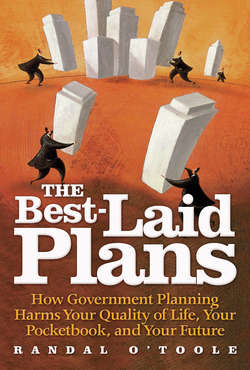Читать книгу The Best-Laid Plans - Randal O'Toole - Страница 10
На сайте Литреса книга снята с продажи.
Clearcutting
ОглавлениеCongress appropriates funds for the Forest Service to arrange and administer timber sales, while timber receipts provide the funds for postsale activities, such as reforestation. From the forest manager’s viewpoint, the funds available for arranging sales are fixed, whereas funds for postsale activities are limited only by timber values and the number of acres included in sale areas. The ideal cutting method, then, is one that cuts the greatest number of acres at the lowest presale cost per acre.
That means clearcutting. As the Forest Service often pointed out, clearcutting had the lowest presale costs since managers onlyneeded to mark the perimeter of areas to be cut. This allowed them to stretch appropriated funds to the greatest possible number of acres. A typical timber sale might include a dozen clearcuts, each located some distance apart. Since the Forest Service defined “sale area” as the land within a quarter mile of trees that are cut, managers could locate clearcuts up to one-half mile apart and apply K-V funds to all the land between them.
At the same time (and contrary to repeated Forest Service claims), clearcutting often imposed the highest postsale costs because it created the harshest environment for reforestation: hot, dry sites, with soil temperatures sometimes reaching levels lethal to seedlings because of the lack of shade. Of course, this simplyallowed managers to keep more K-V funds for reforestation, including, in many cases, funds to shade each individual seedling.
During the 1950s and 1960s, individual national forests discovered, either on their own or by the transfer of personnel from one forest to another, that clearcutting was much more lucrative than other cutting methods. Managers may not even have been aware that the budgetary process was shaping their decisions. They just knew that they got a more positive response from some activities than from others. No doubt some people within the Forest Service genuinely believed that clearcutting was economically and ecologically a superior practice. These people might be promoted over those who believed in selection cutting, not because of their position on clearcutting but because their decisions led to larger budgets for the agency, and thus they were viewed as more successful than supporters of other cutting methods.
